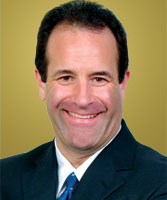 By Jim Peduto By Jim Peduto
Jim Peduto is the president of Matrix Integrated Facility Management and the co-founder of the American Institute for Cleaning Sciences, an independent third-party accreditation organization that establishes standards to improve the professional performance of the cleaning industry. |
Succession planning can be a sensitive topic for business owners. You could say it’s an admission of their individual mortality. Owners might ask themselves, “Am I getting too old to continue running my company?” and “Should I pass my business along to my adult children or should I look outside the family?”
While these are reasonable questions, business owners need to plan beyond their own succession because unexpected and unpredictable departures at any level of the business can affect its success. And attracting and retaining talented employees at all levels is a chore regardless of organization size, taking time and resources away from the core business mission.
Succession planning should no longer begin the moment an employee leaves the company. Adopting a “bottom-to-top” mentality that takes into account employee skills organization-wide, ensures that talented employees are not left behind and helps organizations build a work force from which recruiters can promote.
With your organization chart as a resource, evaluate the current leaders within the organization. Is there an employee who comes to mind that could be a fit for each leader’s position? Where possible, write in the names of each successor below the current employee. Filling some positions will require additional research and documentation, including:
- Collecting career histories for all employees. A work history on each employee will give you a better sense of experience and education levels, regardless of what level they are currently at within the company. Human resources should have resumes on file to give you more background.
- Assessing skills. Document the skills of each employee in regards to leadership, customer relations, marketing, finance and operations. It might also be helpful to have each employee conduct a self-assessment of his or her skills, highlighting strengths and weaknesses. When you compare notes with employees, you can easily identify assessment matches and/or skill gaps.
- Collecting job descriptions. If HR does not have copies of job descriptions, ask employees and their supervisors to write them. In addition to these descriptions, a log of weekly or daily responsibilities is helpful. Also, include a statement describing the value each position brings to the organization.
- Creating a career path and training plan. Prepare the employees who are next in line for each position by sharing your succession plans with them. Make sure workers understand the organization mission and vision for the future and their roles in its success. This can help show employees where their future potential is within the company in terms of career growth and promotion potential. It is important that each employee understands and agrees with his or her career path and what it will take to get there. Include a training plan that will give employees the skills required for their next roles.
A comprehensive succession plan monitors employee performance and development initiatives, at all levels, and ensures key recruits do not slip through the cracks. 

 The Down and Dirty on Cleaning in Virus Season
The Down and Dirty on Cleaning in Virus Season How Surfactant Use is Expanding in Commercial Cleaning
How Surfactant Use is Expanding in Commercial Cleaning